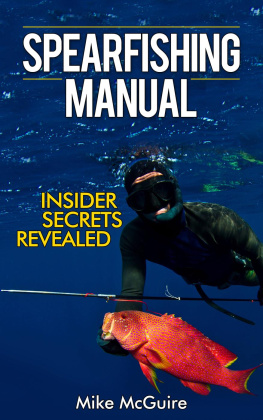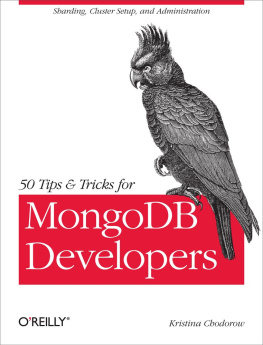99 Tips To Get Better At Spearfishing
Actionable Information to Improve Your Spearfishing
By Isaac Daly and Levi Brown aka Noob Spearos Shrek & Turbo
2017 Noob Spearo Pty Ltd. All Rights Reserved.
*There are significantly more than 99 Tips
You picked up this information so I am betting that like me, you want to become better at spearfishing. You are not alone as thousands of spearos share the same desire. To consistently improve, you need to spend lots of time in the water, as well as, reflecting at the end of every dive day on what you could do differently next time. This guide will give you information to make this process easier.
Rather than being a comprehensive guide to every facet of spearfishing, 99 Tips incorporates short, highly practical tips into an easy to digest format for you to reflect on and adapt into your own spearfishing practice.
For a continual source of new information about everything from improving your breath hold to learning a new hunting technique join us at www.noobspearo.com .
Turbo and I would love to hear how some of these tips have improved your diving, email one of us and tell us your story!
Spearfishing the world over is conducted similarly; however, different areas of the world have developed specific techniques for their particular locale. The Greek and Mediterranean divers are some of the deepest divers in the world. The Portuguese, Norwegians, Kiwis, and many others have adapted specific practices for diving in dirty water. Australians, Americans, and South Africans have developed some of the best equipment for taking down huge fish. From all over the world, spearos have dived, adapted, and speared fish successfully and have their own stories, tips and insights to share.
Here are 99 Tips to whet your appetite and dramatically improve your spearfishing.
Disclaimer
The information contained in this guide is for informational purposes only.
We are not Freediving or Spearfishing Instructors. Any spearfishing and freediving advice that we give are our opinions based on our interviews and our personal experience. You should always seek the advice of a professional before acting on something that we publish or recommend.
The publication of such Third Party Quotes and information does not constitute my guarantee of any information, instruction, opinion, tips or services contained within the Third Party Material.
No part of this publication shall be reproduced, transmitted, or sold in whole or in part in any form, without the prior written consent of the authors. All trademarks and registered trademarks appearing in this guide are the property of their respective owners.
Users of this guide are advised to do their own due diligence when it comes to spearfishing and freediving and all information should be independently verified by qualified professionals. By reading this guide, you agree that Noob Spearo Pty Ltd is not responsible for your safety in any way relating to the information provided in this guide.
Contents
Chapter 1
Finding the Good Places to Go Spearfishing
1. Finding the Good Spots . Google Earth .
If you have heard about a potential new dive location from a mate, local dive shop, or somewhere else; use Google Earth as your next step for checking it out. The best locations available from shore (starting out) are sheltered waters such as: the sheltered side of a headland or rocky point, the sheltered side of an island, or perhaps a harbour or estuary.
In Southern Queensland, these spots are few and far between; however, in the southern half of Australia, they have many more options. It depends on what part of the world you live and the prevailing conditions; but, even in sheltered waters, you can still learn to start shore-dive spearfishing before heading out into the open ocean.
Google Earth is a great preliminary tool for assessing an areas potential for good ground, reef, and finding parking spots.
*Remember, Google Earth cannot communicate current, visibility, entry and exit points and how easily the area is swell affected.
Finding The Good Spots . Find a good dedicated spearfishing retailer .
If you have found that helpful local spearo or group of spearos, then finding out about the local conditions is your next priority. Listen attentively as some conditions create high risk variables that you want to avoid. Variables such as current, swell, entry and exit problems, seasonal jellyfish issues, boat traffic etc. As you gain experience in an area, you will begin to make connections about what works in that particular area and what doesnt.
Water clarity is an issue here in Queensland. We have trouble finding clean water particularly in a northerly wind. In other areas, there are similar unique factors. If you cant find a local guide to be your buddy, then the next best option is to take a screenshot of the area you are planning to dive from Google maps and take it into your local retailer. Often they can point out things about the area or refer you to someone who can. Marking out key things such as recommended entry and exit points on the screenshot map will help you when you arrive on the day.
*Build a relationship with people at your retailer and you will have a source of good information and equipment for years to come.
3. Finding The Good Spots . Navionics and Marine charts .
Navionics is a handy marine app that provides accurate marine charts all over the world. Much of the time you spend in the app will be looking for existing marks using longitudinal and latitudinal coordinates given to you from reliable sources; however, another useful way to use the app is to observe bottom structure paying close attention to irregularities and depth changes.
In an interview with experienced spearfisherman Trevor Ketchion, provided us with good information about how to use your charts and sounder. One tip that stood out : When you have 2 or more good marks in a line away from a point of structure (on land) often the ground between these marks can be worth checking out even if there is no easily identifiable reasons for doing so.
4. Finding The Good Spots . Government sites, line fishing sites, commercial fisherman, blogs and forums .
These can yield some good information for spearos scouting for potential spearfishing sites. Often, recreational fisherman will find this information in the same place where they can locate local regulations and size limits (government sites). Line or pole fisherman also discuss spots online and sometimes their spots are not well known by spearos.
*Offering a 6 pack of beer to a local commercial fisherman can also yield you a nice mark or two to explore next time you head out.
5. Finding The Good Spots . Tide, Moon Phase, and Time of Day .
Species behave very differently with each of these 3 major variables. Dawn and dusk are generally the most active times of day for all fish. Moon phase impacts species differently and often moon phases at specific times of year can signal a seasonal spawn.
Some fish species love a lot of current and so when the tidal changes are at their greatest, this will be the time to specifically target them. For other species its the opposite. When the current gets up, they disappear. These are all good reasons why you should keep a dive log so that you can replicate good results and avoid the same scenarios where you achieved poor results.
Chapter 2
Tips To Increase Your Bottom Time
6. Increase Bottom Time . Relaxation .
Before you even get to the spot, do some full breaths to stretch your lungs and get your body prepared for diving. On the surface, close your eyes and concentrate on releasing all muscle tension. Hold your gun lightly in your hand and breath slow, deep, and even. Go with the current and use the boat rather than swimming against the current when possible.
Next page









